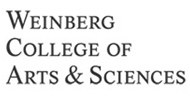Team:Northwestern/Project/Background
From 2011.igem.org
PROJECT

RESULTS

CONSIDERATIONS

ABOUT US

NOTEBOOK

ATTRIBUTIONS


Pseudomonas aeruginosa is armed with an arsenal of well-connected cell density detection systems which directly govern gene expression [4]. The versatility of the quorum sensing system is exhibited by the number of individual genes encoding for virulence, protein secretion, toxins and other factors that mediate immunomodulatory activity [12]. Moreover, research has indicated that P. aeruginosa possesses 5,570 open reading frames of which approximately 9% are heavily implicated with transcriptional regulation systems [13]. The resulting complexity of P. aeruginosa demonstrates it’s potential to survive in wildly disparate environments as a direct consequence of the pathogens innate sensing system which facilitates rapid adaptation [13].
The process of quorum sensing is a complex summation of individual systems involving multiple levels of transcriptional regulation and competitive inhibition [1,4]. Researchers have identified over 50 genes P. aeruginosa genes directly participating in quorum systems and –conservatively speaking – 616 more that showed statistically significant difference expression in the presence of autoinducers [4]. Quorum sensing in P. aeruginosa has been exhaustively studied. So far, researchers have identified and characterized the las and rhl cell signaling systems [4]. These two systems bear a striking resemblance to the lux gene system discovered initially in Vibrio fischeri tying quorum sensing capabilities to bioluminescence [5]. An overview of the quorum sensing signaling model in P. aeruginosa is illustrated in Figure 1.
 |
Just as most gram-negative pathogens, the cell-to-cell signaling of Pseudomonas aeruginosa is facilitated by small homoserine lactone-based molecules, called an autoinducer [5].Under non-quorum conditions, the pathogenic cells produce the autoinducers at a basal rate. Over a period of time, the concentration of the autoinducers increases significantly as demonstrated in Figure 2. As the concentration of the autoinducers increases past a threshold, they bind to specific protein transcriptional factors [2].There are two crucial mechanisms governing the cell signaling cascades taking place within P. aeruginosa; namely, the las and the rhl signaling pathways [2].
 |
The las signaling system defines type 1 quorum. The las system is affected by the autoinducer 3-oxo-C12-HSL (N-[3-oxododecanoyl]-L-homoserine lactone or PAI-1. Arguably, the two most important components of the las signaling system are the lasR gene which produces the transcriptional regulator protein LasR, and the lasI gene which facilitates the production of the autoinducer PAI-1 [3]. When the intracellular concentration of PAI-1 rises, it binds to its cognate R protein, LasR and forms a LasR/PAI-1 dimer [6]. The LasR/PAI-1 dimer initiates type 1 quorum signaling cascade acting as the principle transcriptional regulating protein complex [7]. Additionally, the LasR/PAI-1 protein dimer complex can transcriptionally regulate the LasR protein production [7]. Moreover, the LasR/PAI-1 dimer facilitates the expression of virulence genes such as LasB along with virulence factors such as LasA protease and endotoxin A in addition to several other protein synthetic pathways [8].
The type 2 quorum induced cell signaling machinery is predominately defined by the rhl system [9, 10]. Transcriptional activation of the rhl gene is facilitated by GacA and the LasR/PAI-1 protein complex, thereby making the type 2 a secondary cell signaling apparatus dependent on the type 1 quorum system [8]. The primary components of the rhl system are the rhll and the rhlR gene sequences [2]. The rhll gene is primarily responsible for the production of a homoserine lactone, C4-HSL (N-butyrylhomoserine lactone) or PAI-2 [2]. On the other hand, the rhlR gene is responsible for the production of the PAI-2’s cognate R-protein, RhlR [2]. Contrary to the las system, RhlR can be deactivated by the competitive binding of the autoinducer PAI-1 [11]. Therefore, type 2 cell signaling machinery is controlled at two levels; transcriptional and post-transcriptional by the typ1 1 quorum sensing machinery [11]. However, the binding of PAI-2 to RhlR forming the RhlR/PAI-2 protein dimer complex augments the production of PAI-2 via positive transcriptional regulation of the rhll gene [11]. Upon formation, the RhlR/PAI-2 protein dimer complex is vital for the optimal activation of the LasB gene and the production of LasA protease, among other genes involved with protein secretion and toxins [12].
 "
"




